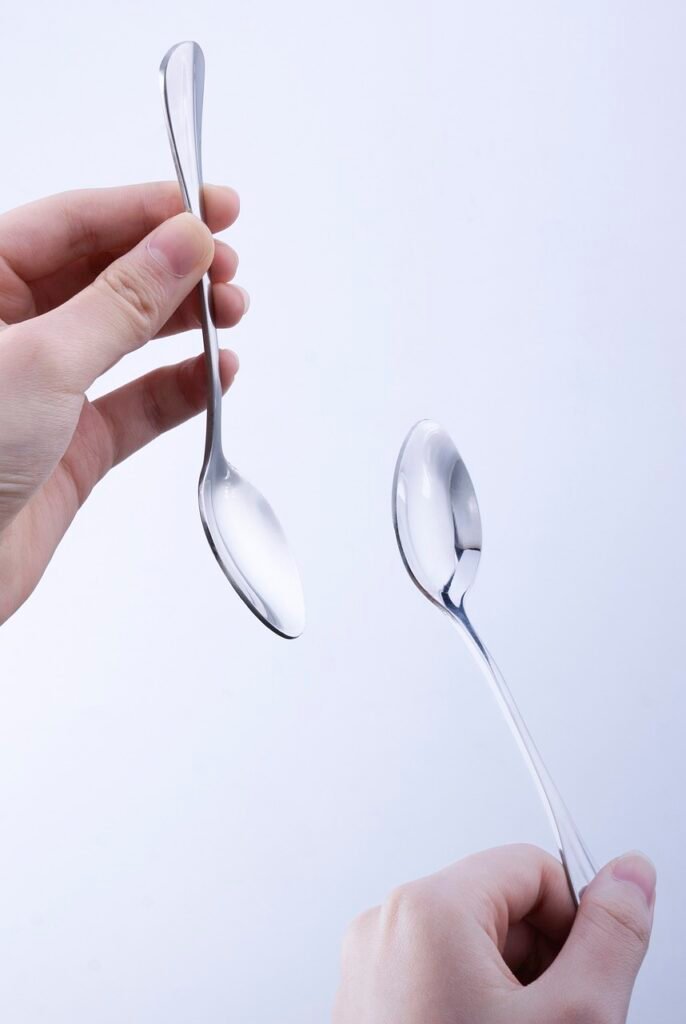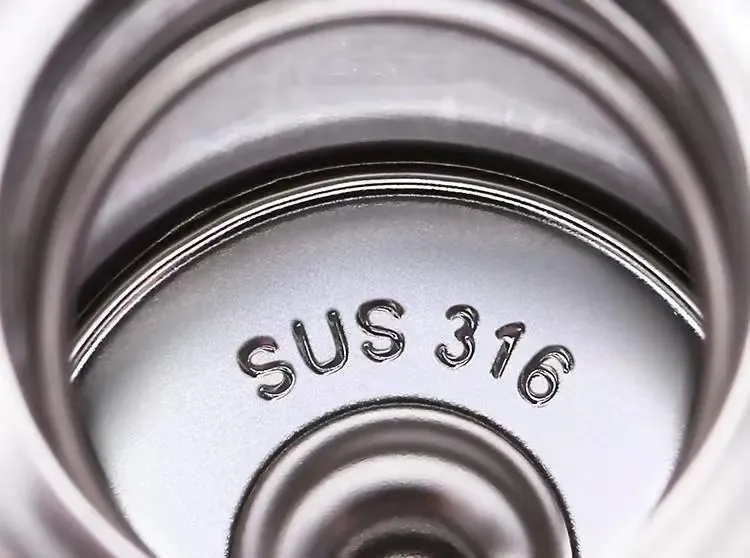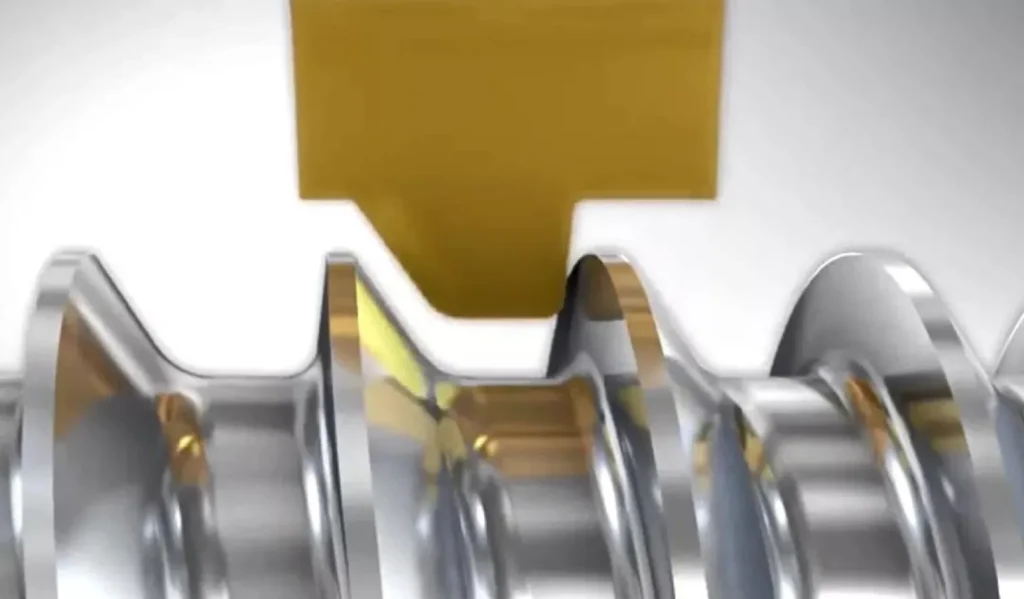Hey there, fellow sensitive-skinned friend!
Ever put on a gorgeous piece of jewellery, only to end up with an itchy, red rash an hour later?
Yeah, I’ve been there too. It’s no fun at all.
But here’s the good news: there’s a solution, and it’s called best stainless steel grade hypoallergenic.
In this guide, we’re diving deep into the world of hypoallergenic metals, with a special focus on stainless steel.
By the end, you’ll know exactly which grade of stainless steel is best for your sensitive skin.
Spoiler alert: it’s 316L stainless steel. But stick around, because there’s a lot more you need to know!
Why Stainless Steel? The Allergy-Friendly Metal Champion

Before we get into the nitty-gritty, let’s talk about why stainless steel is such a popular choice for people with sensitive skin.
Stainless steel is:
- Durable (it’ll last you ages)
- Affordable (compared to precious metals like gold or platinum)
- Resistant to corrosion (no green skin, thank you very much)
- Less likely to cause allergic reactions (when you choose the right grade)
But here’s the kicker: not all stainless steel is created equal when it comes to being hypoallergenic.
Some grades are way better than others at keeping those pesky allergic reactions at bay.
The Stainless Steel Showdown: 316L vs 304
When we’re talking about hypoallergenic stainless steel, two grades often come up in conversation:
- 316L stainless steel
- 304 stainless steel
Both are solid choices, but one of them takes the crown as the best stainless steel grade for hypoallergenic purposes.
Let’s break it down.
316L Stainless Steel: The Hypoallergenic Hero

Drumroll, please… 316L stainless steel is the winner when it comes to being hypoallergenic!
Here’s why 316L is the best stainless steel grade for sensitive skin:
- It’s got a lower carbon content, making it more resistant to corrosion
- Contains 2-3% molybdenum, which boosts its resistance to chlorides (think sweat and seawater)
- Less likely to release nickel, a common allergen that causes most metal allergies
- Often called “surgical steel” because it’s used in medical implants
316L is the go-to for high-end jewellery and watches meant for sensitive skin.
If you’ve got super reactive skin, this is your best bet.
304 Stainless Steel: The Solid Runner-Up
Now, don’t get me wrong. 304 stainless steel is also a good choice for hypoallergenic jewellery.

It’s:
- More commonly used than 316L
- Generally less expensive
- Still resistant to corrosion, but not as much as 316L
For most people with mild metal sensitivities, 304 stainless steel works just fine.
But if you’re looking for the best of the best, 316L is the way to go.
The Science Behind the Steel: Why 316L Wins
Alright, let’s get a bit nerdy for a second. What makes 316L so special?
It all comes down to composition:
- 316L contains more nickel (10-14%) than 304 (8-10.5%)
- BUT, and this is a big but, 316L is much more stable
- This means it’s less likely to release that nickel into your skin
The “L” in 316L stands for “low carbon.” This lower carbon content (0.03% max) makes it even more resistant to corrosion.
Plus, that molybdenum we mentioned earlier? It forms a protective layer on the surface of the metal, further reducing the chance of any nasty reactions.
But Wait, What About Other Hypoallergenic Options?
Now, I know what you’re thinking. “Is stainless steel the only option for us sensitive-skinned folks?”
Not at all! Let’s look at some other popular hypoallergenic metals:
Titanium: The Lightweight Luxe Option
Titanium is often touted as the most hypoallergenic metal out there. Here’s why:
- It’s biocompatible (your body loves it)
- Incredibly strong and lightweight
- Highly resistant to corrosion
- Contains no nickel whatsoever
Sounds perfect, right? Well, almost. The downside is that titanium can be pricier than stainless steel and harder to work with.
Niobium: The Lesser-Known Gem
Niobium is another excellent hypoallergenic option:
- Extremely rare allergic reactions
- Can be anodized to create beautiful colours
- Highly resistant to corrosion
However, it’s not as widely available as stainless steel or titanium.
Gold: The Classic Choice (With a Catch)
Gold, especially 14k or higher, is often considered hypoallergenic. But there’s a catch:
- Pure gold (24k) is too soft for everyday jewellery
- Lower karat gold contains other metals, which could cause reactions
- It’s significantly more expensive than stainless steel
Platinum: The Premium Pick
Platinum is another excellent hypoallergenic option:
- Very pure (usually 95% or more)
- Extremely durable
- Rarely causes allergic reactions
The downside? It’s one of the most expensive metals out there.
The Nickel Dilemma: Why It Matters
Now, let’s talk about the elephant in the room: nickel.
Nickel is the most common cause of metal allergies. In fact, it’s estimated that about 10-20% of the population is sensitive to nickel.
Here’s the tricky part: both 316L and 304 stainless steel contain nickel. So why are they considered hypoallergenic?
It’s all about stability:
- In high-quality stainless steel, the nickel is bound tightly in the metal’s structure
- This means it’s much less likely to leach out and cause a reaction
- 316L is even more stable than 304, which is why it’s the top choice
Real Talk: My Personal Journey with Hypoallergenic Metals
I’ve got sensitive skin myself, and I’ve been through the wringer with different metals.
When I first discovered 316L stainless steel, it was a game-changer.
No more itchy, red skin from my favourite necklace or watch.
But here’s the thing: everyone’s skin is different.
What works for me might not work for you.
It’s all about finding what works best for your unique skin.
FAQs: Your Burning Questions Answered
Let’s tackle some common questions about hypoallergenic stainless steel:
Q: Which stainless steel is hypoallergenic? A: Both 316L and 304 stainless steel are considered hypoallergenic, with 316L being the top choice for those with severe sensitivities.
Q: Is 316 stainless steel good for sensitive skin? A: Absolutely! 316 (and especially 316L) stainless steel is excellent for sensitive skin due to its high corrosion resistance and low nickel release.
Q: What metal is 100% hypoallergenic? A: While no metal is guaranteed to be 100% hypoallergenic for everyone, titanium and niobium come pretty close. They’re your best bet if you have severe metal allergies.
Q: Is 316L steel hypoallergenic? A: Yes, 316L stainless steel is considered highly hypoallergenic and is often used in medical implants and high-end jewellery.
Q: Is 304 stainless steel hypoallergenic? A: Yes, 304 stainless steel is generally considered hypoallergenic, though not quite as much as 316L. It’s a good choice for most people with mild metal sensitivities.
Q: Is titanium hypoallergenic? A: Titanium is indeed hypoallergenic and is often recommended for people with severe metal allergies.
Q: Can I wear gold if I’m allergic to other metals? A: It depends on the karat and your specific sensitivities. Higher karat gold (18k or 24k) is less likely to cause reactions, but it’s also softer and more expensive.
Tips for Caring for Your Hypoallergenic Jewellery
Want to make sure your hypoallergenic stainless steel stays in top shape? Here are some quick tips:
- Clean regularly with mild soap and water
- Avoid exposure to harsh chemicals (including perfumes and lotions)
- Store in a cool, dry place
- Remove before swimming or showering
- Don’t wear it 24/7 – give your skin a break now and then
The Future of Hypoallergenic Metals
As technology advances, we’re seeing new alloys and treatments that promise even better hypoallergenic properties.
Keep an eye out for:
- Nano-coatings that enhance corrosion resistance
- New alloys with even lower nickel content
- Advancements in titanium processing that could make it more affordable
- Innovations in biocompatible materials inspired by medical research
How to Choose the Right Hypoallergenic Jewellery for You
Alright, so now you know that 316L stainless steel is the best grade for hypoallergenic purposes. But how do you actually go about choosing the right jewellery? Here are some tips:
- Look for reputable sellers who specify the grade of stainless steel
- Don’t be afraid to ask questions about the metal composition
- Start with small, inexpensive pieces to test your skin’s reaction
- Consider getting a patch test from a dermatologist if you’re unsure
- Remember that even hypoallergenic metals can cause reactions in some people
The Cost Factor: Balancing Quality and Budget
Let’s talk money for a second. Yes, 316L stainless steel is generally more expensive than 304. But here’s why it’s worth it:
- Less likely to cause reactions = more comfortable to wear
- Higher corrosion resistance = lasts longer
- Better quality overall = looks better for longer
Think of it as an investment in your comfort and style.
Beyond Jewellery: Other Uses for Hypoallergenic Stainless Steel
Hypoallergenic stainless steel isn’t just for jewellery. It’s used in a variety of applications:
- Medical implants and surgical instruments
- Body piercing jewellery
- Watch cases and bands
- Cooking utensils and cookware
- Eyeglass frames
So if you’ve got sensitive skin, keep an eye out for 316L stainless steel in these products too!
Wrapping It Up: Your Path to Itch-Free Style
Finding the best hypoallergenic stainless steel doesn’t have to be a headache.
Remember:
- 316L is your top choice for maximum hypoallergenic properties
- 304 is a solid runner-up
- Don’t forget about titanium if you need something even more hypoallergenic
At the end of the day, it’s all about finding what works for you and your skin.
Don’t be afraid to experiment (safely) and find your perfect match.
Your skin will thank you, and you’ll be rocking that jewellery with confidence in no time.
So there you have it, folks. The best stainless steel grade for hypoallergenic purposes is 316L. It’s the gold standard (ironically) when it comes to hypoallergenic stainless steel.
Whether you’re shopping for a new watch, a sleek bracelet, or even cooking utensils, keep an eye out for that 316L label.
Your sensitive skin will thank you, and you’ll be able to accessorize without fear.
Remember, life’s too short for itchy jewellery. Treat yourself (and your skin) to the best!
Got more questions about hypoallergenic stainless steel? Drop them in the comments below, and let’s keep the conversation going!
After all, we’re all in this together when it comes to finding the best solutions for sensitive skin.
Stay stylish and itch-free, my friends!
For stainless steel machining, please contact us!


